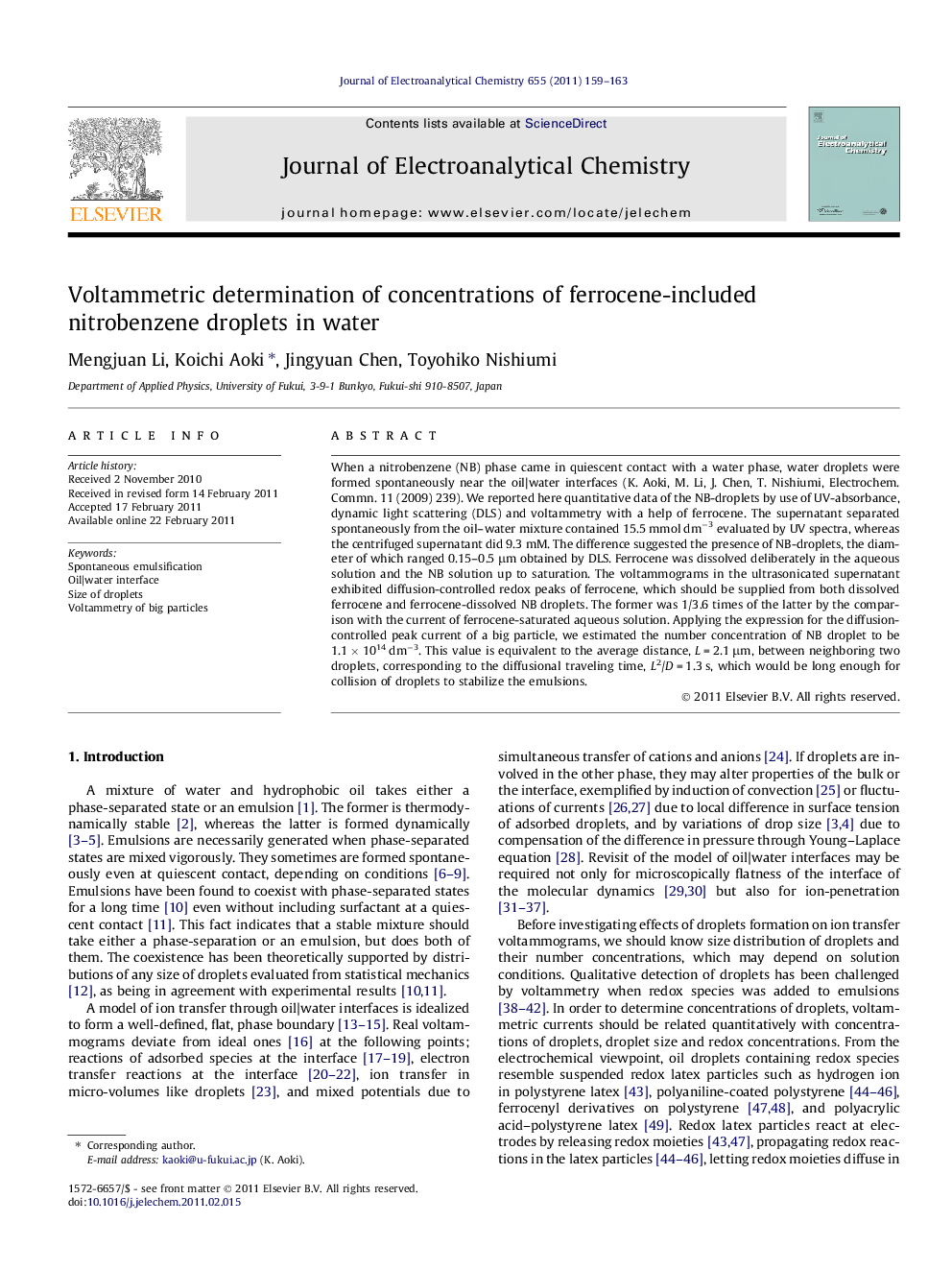| Article ID | Journal | Published Year | Pages | File Type |
|---|---|---|---|---|
| 219635 | Journal of Electroanalytical Chemistry | 2011 | 5 Pages |
When a nitrobenzene (NB) phase came in quiescent contact with a water phase, water droplets were formed spontaneously near the oil|water interfaces (K. Aoki, M. Li, J. Chen, T. Nishiumi, Electrochem. Commn. 11 (2009) 239). We reported here quantitative data of the NB-droplets by use of UV-absorbance, dynamic light scattering (DLS) and voltammetry with a help of ferrocene. The supernatant separated spontaneously from the oil–water mixture contained 15.5 mmol dm−3 evaluated by UV spectra, whereas the centrifuged supernatant did 9.3 mM. The difference suggested the presence of NB-droplets, the diameter of which ranged 0.15–0.5 μm obtained by DLS. Ferrocene was dissolved deliberately in the aqueous solution and the NB solution up to saturation. The voltammograms in the ultrasonicated supernatant exhibited diffusion-controlled redox peaks of ferrocene, which should be supplied from both dissolved ferrocene and ferrocene-dissolved NB droplets. The former was 1/3.6 times of the latter by the comparison with the current of ferrocene-saturated aqueous solution. Applying the expression for the diffusion-controlled peak current of a big particle, we estimated the number concentration of NB droplet to be 1.1 × 1014 dm−3. This value is equivalent to the average distance, L = 2.1 μm, between neighboring two droplets, corresponding to the diffusional traveling time, L2/D = 1.3 s, which would be long enough for collision of droplets to stabilize the emulsions.
Graphical abstractSpontaneous formation of NB droplets.Figure optionsDownload full-size imageDownload as PowerPoint slideHighlights► NB-droplets were formed spontaneously near the oil|water interfaces. They were removed by centrifugation although the concentration of NB was less than the saturated one. ► Concentration and size of the NB droplets were detected by dynamic light scattering and voltammetry.
